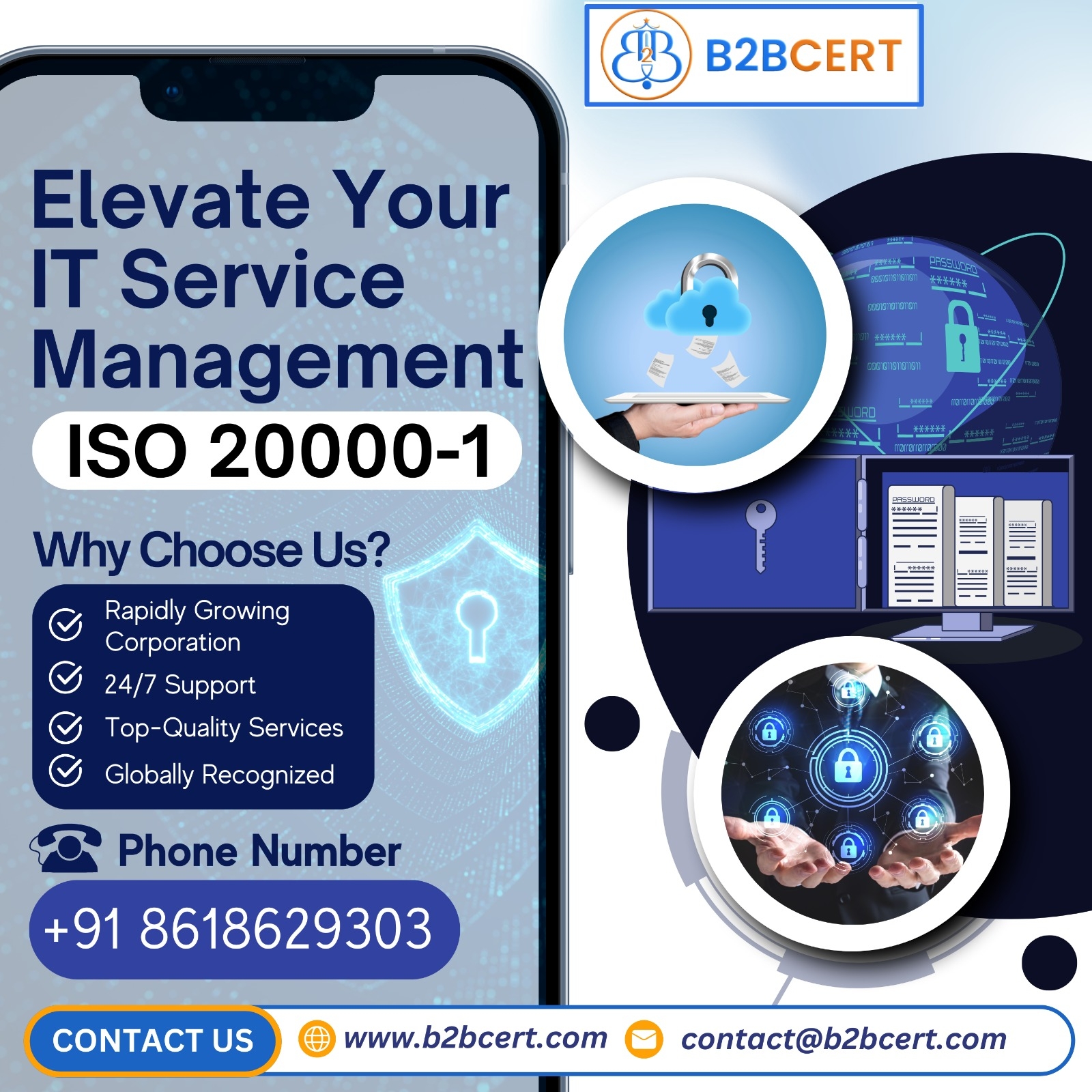As digital transformation accelerates in the Philippines, organizations increasingly rely on efficient and reliable IT services. ISO/IEC 20000-1 is the international standard for IT service management (ITSM), providing a framework to align IT services with business needs. Achieving ISO 20000-1 Certification in Philippines not only enhances service quality but also boosts customer satisfaction, operational efficiency, and competitive advantage.
This article provides a complete guide to obtaining ISO 20000-1 certification in Philippines, including its importance, benefits, and the steps involved.
What is ISO 20000-1?ISO/IEC 20000-1 is the globally recognized standard for IT service management systems (SMS). It outlines requirements for establishing, implementing, maintaining, and continually improving an ITSM. The standard is based on the ITIL (Information Technology Infrastructure Library) framework but is more formalized, providing clear, auditable criteria.
Key areas covered by ISO 20000-1 include:
-
Service delivery and service level management
-
Incident and problem management
-
Change and release management
-
Capacity and availability planning
-
Business relationship and supplier management
-
Continual service improvement
The standard ensures that IT services are delivered effectively, securely, and aligned with customer expectations.
Why ISO 20000-1 Certification is Important in the PhilippinesWith the Philippines emerging as a hub for IT-enabled services, especially in the BPO and fintech sectors, quality and reliability of IT services are critical. ISO 20000-1 certification offers several advantages for organizations operating in this fast-growing digital landscape:
-
Increased Customer Confidence: Certification shows clients that your services meet international standards.
-
Regulatory Compliance: It helps meet industry regulations and governance requirements.
-
Operational Efficiency: Streamlines IT processes and reduces downtime.
-
Market Differentiation: Offers a competitive edge when bidding for contracts or working with global clients.
-
Risk Management: Improves control over IT-related risks and disruptions.
1. Understand the Standard Requirements
Start by reviewing the ISO 20000-1:2018 standard to understand its structure and requirements. The standard includes clauses related to:
-
Context of the organization
-
Leadership and planning
-
Support and operation
-
Performance evaluation
-
Improvement
It’s important to align your existing ITSM practices with these requirements before proceeding with certification.
2. Conduct a Gap AnalysisA gap analysis helps assess your current IT service management system against the standard. This step identifies what’s already in place and what needs to be developed or improved. Focus areas include:
-
Documentation of policies and procedures
-
Roles and responsibilities
-
Service management plans
-
Process controls and reporting systems
A consultant with ISO 20000-1 Consultants in Philippines experience can assist in performing a detailed assessment.
3. Develop or Enhance Your Service Management System (SMS)Based on the gap analysis, you’ll need to establish or improve your SMS. This includes:
-
Creating a service management policy
-
Developing incident, change, and problem management processes
-
Setting up a service catalog and SLAs
-
Implementing performance monitoring systems
-
Ensuring training and awareness for staff
Strong leadership involvement and stakeholder engagement are key to a successful implementation.
4. Conduct Internal Audits and Management ReviewBefore applying for certification, conduct internal audits to check compliance with ISO 20000-1 requirements. Any non-conformities should be corrected. A management review meeting should be held to evaluate the performance and effectiveness of the SMS.
5. Choose a Certification Body and Undergo the AuditSelect an accredited certification body that operates in the Philippines, such as:
-
SGS
-
TÜV SÜD
-
Bureau Veritas
-
DQS
The certification process includes a two-stage audit:
-
Stage 1: Review of documentation and readiness
-
Stage 2: On-site or remote audit of implemented processes and controls
If successful, your organization will receive ISO 20000-1 Certification Services in Philippines, typically valid for three years with annual surveillance audits.
Maintaining ISO 20000-1 CertificationAfter certification, continual improvement is essential. Regular internal audits, staff training, and management reviews will help keep your ITSM aligned with the standard. Surveillance audits by the certification body ensure ongoing compliance.
ConclusionISO 20000-1 certification is a powerful tool for organizations in the Philippines aiming to improve IT service quality and meet international expectations. By following a structured approach—understanding the standard, assessing gaps, implementing necessary systems, and engaging a trusted certifier—you can position your business for long-term success in the evolving digital economy.


